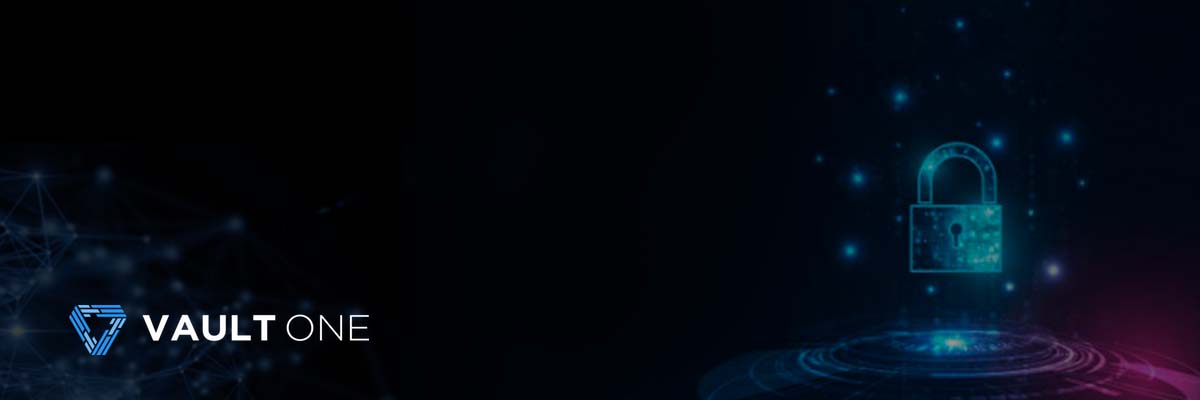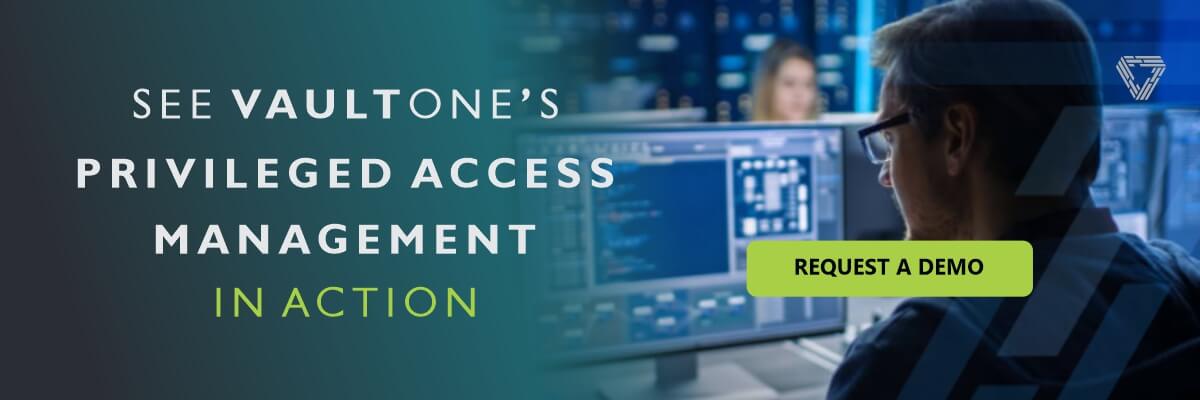Managing PAM (Privileged Access Management): A Guide to a Secure and Efficient System and best practices
- Updated at
- By Sabrina Zapora
- PAM - Privileged Access Management, Security

Understanding the Basics of PAM Management
Privileged Access Management (PAM) is a type of security system that is designed to protect and control access to privileged information as well as accounts. It stands out as an indispensable component in any organization’s security infrastructure, since it assists with safeguarding against malicious or inadvertent misappropriation of sensitive data. PAM-based solutions enable organizations the capacity to centrally manage, monitor, audit, and secure privileged user access across all systems present within their environment.
In its essence, PAM management involves instituting a set of policies and procedures which embody how privileged user accounts are supervised inside an organization with credential management policies.
It is typical for policies to include the restricting of access to particular systems and applications on account of users’ roles or levels of authorization; enforcing stringent authentication protocols, logging any activity associated with usage of privileged accounts, observation for doubtful behavior; executing regular audits, introducing security best practices such as least privilege principle appropriately; setting up frequent privilege reviews and revoking privileges when necessary.
When combined with other security measures such as multifactor authentication (MFA), encryption technology, vulnerability assessment tools and patch management solutions, Privileged Access Management (PAM) can significantly reduce the risk posed by malicious actors targeting vulnerable systems containing sensitive information or other assets of value. Moreover, it enables organizations to comply with various regulations like GDPR (General Data Protection Regulation) through providing insight into who has accessed what data when. By employing a comprehensive PAM solution that offers centralized control for managing privileged users across an organization’s business units – companies are able to make sure only sanctioned individuals have entry to sensitive resources while making them liable for any alterations produced by those persons concerning manipulation or destruction of data. This leads to minimized chances that unaccredited access could be gained via misconfigured accounts or additional weaknesses in their environment – eventually ensuing in improved overall cybersecurity attitude for businesses all around the world.
Ensuring Security with Advanced PAM Tools
It is essential for any business to have a secure system and Advanced PAM (Privileged Access Management) tools can be considered one of the most important considerations in this regard. A comprehensive suite of tools are provided by PAM solutions so that organizations can manage, monitor, and protect privileged accounts as well as their access rights across all IT resources. This includes governance over access controls, authentication protocols pertaining to user identity management along with ensurement of secure communication channels between users and systems. Consequently, with an advanced PAM solution being implemented within the organization, it would help them better safeguard critical assets from potential unauthorized access or malicious activity.
Access control measures ensure that only personnel with the necessary credentials that have been authorized can gain access to privileged accounts; meanwhile, authentication protocols affirm that users are in fact who they claim to be before authorization is granted. Additionally, user identity management permits administrators to establish distinct identities for each individual user or account as well as track usage activity over a certain period of time so as to promptly identify any potential suspicious behavior or threats efficiently and productively.
Secure communication channels are essential for the successful management of PAM solutions; these channels enable companies to securely exchange data between users without risk of interception or manipulation by malicious actors. This additional layer of protection ensures that confidential information will remain private even when sent over networks or through applications such as emails and social media platforms. In addition, many contemporary PAM solutions have in-built monitoring tools which allow administrators to track usage activity, thereby enabling them to identify any abnormal patterns which may indicate potential security breaches promptly so corrective action can be taken if necessary.
The Role of Identity in PAM Strategy
The importance of identity in a successful Privileged Acess Management (PAM) strategy cannot be overemphasized. Identity is the foundation upon which access to systems and data is granted, making identity management solutions essential for controlling user access to sensitive information. To ensure that only permitted users have access to privileged accounts, organizations must implement an effective identity and access management process with the control of privileged credentials consisting of verifying user identities as well as managing user credentials.
Identity-based authentication is essential for a privileged account management (PAM) strategy. It allows organizations to verify users’ identities and prevent unauthorized entry into their systems. Robust authentication methods, like multifactor authentication or biometric verification systems, should be used to ensure that only approved personnel can access privileged accounts.
Organizations should consistently monitor user activity and detect any suspicious behavior to identify potential security issues before they become serious. Protecting passwords for privileged accounts is crucial, and password policies, such as regular changes and two-factor authentication, should be implemented when accessing critical resources or data sets.
Password vaulting solutions can be used to store all passwords in a centralized location, preventing unnecessary exposure on multiple systems or applications. Processes related to identities associated with privileged accounts should be established to prevent unauthorized access through stolen credentials or impersonation attacks like phishing emails.
Regular auditing and monitoring of users with enhanced privileges are important measures to promptly identify any suspicious activity if necessary.
Navigating Access Control with PAM
Negotiating Access Control with Privileged Access Management can prove to be a challenging and intricate undertaking. Consequently, many establishments are now turning to PAM solutions in order to assist them in streamlining the user access control process, thereby enabling administrators and users alike to speedily and securely oversee their accounts. PAM solutions furnish an extensive selection of options for managing user access across various systems. These choices comprise authentication techniques like single sign-on, twofold authentication, biometric authorization, identity management platforms, password administration tools as well as multifactor validation among others.
Furthermore, PAM solutions can be employed to create authorization policies that dictate which users are allowed entry into what resources within the framework of an organization. These responses also provide support for compliance needs such as SOX or HIPAA/HITECH and aid companies in adhering to them by providing a secure system for regulating access that protects sensitive data from unauthorized use or disclosure.
Furthermore, some PAM solutions provide granular controls over individual user accounts, affording administrators the ability to determine precisely what type of access is granted to each user on a system or application level. Additionally, many PAM solutions focus largely on providing reports that give IT teams an insight into how their systems are being utilized; this allows them to identify any prospective security risks or breaches in audit standards which may have gone undetected because of manual processes or lack of visibility concerning who had access when and where. This information enables IT staff to have the means by which they can take proactive steps towards remediation before considerable harm has been done.
Importance of Auditing in Successful PAM Implementation
The implementation of a successful Privilege Access Management (PAM) strategy necessitates auditing as an indispensable component. Auditing provides organizations with the ability to observe and document user activities, thereby assisting in detecting and averting malicious behavior. Moreover, it helps recognize vulnerabilities and potential dangers that could be exploited by aggressors. Continual auditing enables businesses to stay current on their security processes which can facilitate protection against malicious actors.
Incorporating audit operations into any PAM plan is essential due to its capacity for uncovering unauthorized access or inappropriate usage associated with privileged accounts.
By monitoring user activity, organizations can rapidly detect any behavior that could be considered suspicious or malicious attacks before they cause severe harm to the system or data. Audit logs offer a comprehensive outlook of user interactions over time so that companies are able to precisely evaluate how users interact with their systems and enact necessary modifications if required. Additionally, audit logs help administrators identify who is liable for certain activities within the network, allowing them to pinpoint locations where additional safety controls may require implementation or existing regulations need amplification.
Furthermore, audit logs serve as an aid in recognizing aberrant patterns in individual conduct which might denote someone attempting privilege escalation against the company’s infrastructure and resources storing information. Lastly, when attackers have attained entry into an environment – through auditing log facts IT teams are capable of tracing back suspect actions expeditiously thereby facilitating more efficient containment of attack prior to further injury caused by intruders’ movements on afflicted systems/networks/applications/data stores etc.
Best practices of the implementation of a privileged access management solution (PAM)
When implementing Privileged Access Management (PAM), there are several best practices that organizations should follow. Firstly, organizations should ensure that there is multiple factor authentication (MFA) in place for all privileged accounts. This means that users would need to provide at least two forms of identification, such as a password and a fingerprint or a smart card. This greatly enhances the security of the PAM system by adding an extra layer of protection. Another best practice is to regularly rotate the passwords and access credentials for privileged accounts. This helps to minimize the risk of unauthorized access and ensures that any compromised credentials are quickly replaced.
Additionally, organizations should have detailed access and authorization policies in place, clearly defining who can access privileged accounts and under what circumstances. Regular monitoring and auditing of privileged account activity is also vital to detect any suspicious or unauthorized activity. Regular monitoring and auditing of privileged account activity is an essential practice to ensure the security and integrity of an organization’s systems and data. Privileged accounts have elevated privileges and access to critical systems, making them attractive targets for attackers.
By regularly monitoring and auditing privileged account activity, organizations can detect and respond to any suspicious or unauthorized behavior promptly. This includes activities like monitoring login attempts, tracking user actions, and reviewing logs and audit trails.Several benefits come with regular monitoring and auditing of privileged account activity:
1. Early detection of unauthorized access: By monitoring privileged account activity, any unauthorized attempts to access or misuse privileged accounts can be identified promptly. This early detection allows organizations to take immediate action and minimize the potential damage.
2. Identifying insider threats: Monitoring privileged account activity helps in detecting any suspicious behavior by employees, contractors, or partners who may abuse their privileges for personal gain or malicious intent. This proactive approach aids in preventing insider threats and potential data breaches.
3. Compliance with regulations and industry standards: Regular monitoring and auditing are necessary to comply with various regulations such as the Payment Card Industry Data Security Standard (PCI DSS), General Data Protection Regulation (GDPR), or Sarbanes-Oxley Act (SOX). Such regulations require organizations to demonstrate control and oversight of privileged accounts, making monitoring and auditing essential.
4. Forensic investigations and incident response: In the event of a security incident or breach, monitoring and auditing privileged account activity provide crucial forensic evidence. These logs and audit trails can be analyzed to understand the scope of the incident, identify the root cause, and strengthen security measures to prevent similar incidents in the future.
To effectively monitor and audit privileged account activity, organizations employ technologies like privileged access management (PAM) solutions. These solutions provide real-time monitoring, alerting, and comprehensive reporting capabilities to ensure continuous visibility and control over privileged accounts.
In conclusion, regular monitoring and auditing of privileged account activity is vital for organizations to detect and respond to any suspicious or unauthorized activity promptly. This practice helps in ensuring the security, compliance, and resilience of critical systems and data.
Also, regular training and awareness sessions should be conducted for all personnel who have access to privileged accounts to ensure they understand the importance of following PAM best practices.
Thus, it is critical to recognize the importance of PAM Management for any enterprise. By utilizing Identity, Access and Auditing tools to determine who has access to confidential information and resources, organizations can adequately safeguard their data against potential security risks. Moreover, with appropriate measures in place surrounding authorization processes and audit trails that track user activity over time, businesses can ensure a robust level of protection for their overall infrastructure.
Introducing VaultOne: Your Trustworthy Partner for PAM
When it comes to Privileged Access Management (PAM), having a trustworthy partner is essential. They provide expertise, ensure security, offer support, enhance efficiency, promote scalability, ensure compliance, and foster long-term partnerships. VaultOne is the solution you’ve been looking for.
VaultOne is a comprehensive PAM solution designed to address these critical needs. It offers robust features and functionality to protect against unauthorized access and data breaches for greater security and risk management. By leveraging VaultOne, organizations can confidently manage and control privileged accounts, ensuring the highest level of security and compliance.
Here are some key reasons why you should consider VaultOne:
- Access Manager: Simplify and automate user and password management to protect against external attackers and malicious insiders.
- Session Manager and Recorder: Provides session management, monitoring and the recording of user sessions in real-time to quickly identify and mitigate malicious activities.
- Password Manager and Generator: Securely manage and generate complex passwords to enhance your company’s security.
- Password Vaulting: Safely store and manage passwords, ensuring authorized individuals have exclusive access.
- Task Automation: Automate routine tasks to save time and improve efficiency.
- Multifactor Authentication: Adopt multifactor authentication to enhance security and prevent unauthorized access.
- Auditing & Reporting: Easily manage, report, and audit user activities to meet compliance requirements.
- Role-based Access Administration: Control user access based on their roles and responsibilities within your organization.
- Customizable Policies: Define access control policies tailored to your company’s risk-based factors and needs.
- Disaster Recovery & Backup: Ensure business continuity with a solid disaster recovery plan in place.
VaultOne helps organizations achieve compliance with various privacy and security requirements from laws, regulations, and standards such as GDPR, HIPAA, SOX, FIPS, PCI DSS, NIST, and ISO 27001. By adopting the Zero Trust model, VaultOne provides full control over access and passwords, ensuring security, privacy, and compliance. With centralized data and control, you can effectively manage, report, and audit user activities for your team and third parties.
In today’s world, where privacy and data protection laws are becoming increasingly stringent, VaultOne offers advanced technology to secure and manage user access and passwords. By partnering with VaultOne, your business can meet these requirements, demonstrate compliance, and prevent cyberattacks. Trust VaultOne as your reliable partner for PAM, enabling you to safeguard your sensitive systems and data effectively.
VaultOne prevents these data breaches by protecting the user and their access. VaultOne also tracks and records access sessions for forensic analysis, auditing, and identifying breaches.



